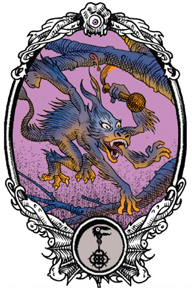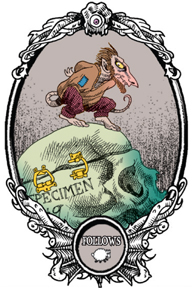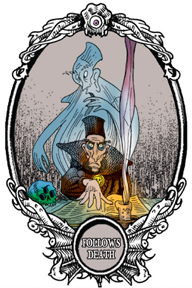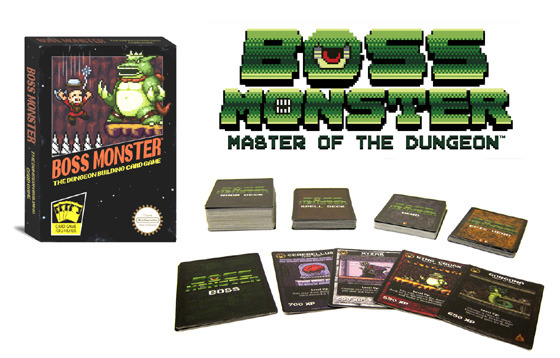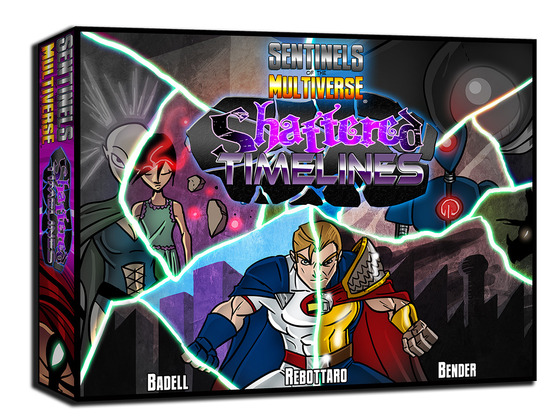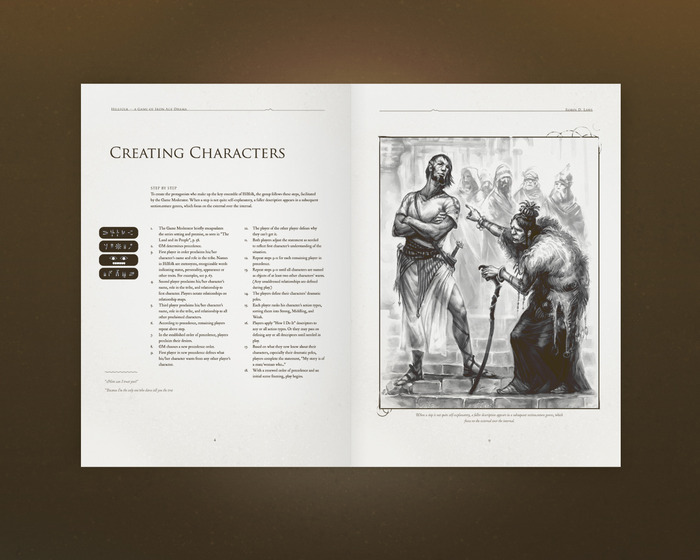The holidays are a time when families come together. The presence of my relatives got me thinking about games, and how RPG characters often exist in isolation. After all, if my goal is to make the most efficient dungeon delver ever, what practical benefit is there to having a kid sister or an aging mother? Sheer mechanics aside, how will it make the game experience more fun for me?
In general, exploring family is a way to add depth to a character. Where have they come from? What are their roots? Is the fighter carrying on a proud tradition, or is he a black sheep whose adventuring career is an embarrassment to his noble family? Is there a town he calls home, or are his kinfolk spread across the land?
Here’s a few of my ideas on the subject. Some of these I’ve used in the past; others I might try in the future. I’d love to hear what you’ve done with families in your games!
THE ORPHAN
You want to be a lone wolf with no ties to the world? Nothing wrong with that. But if you don’t have any family, WHY don’t you have any family? A few scenarios:
- Graven’s family were massacred by the Karrns in the Last War. This fuels his long-standing hatred of all things Karrnathi and general dislike of the undead. If he’s mainly a dungeon crawler, this might be as far as it goes. In a more intrigue-oriented campaign he might eventually learn that the attack was actually carried out by the Emerald Claw on behalf of Erandis Vol; his family held some secret that posed a threat to her. Can he uncover this and avenge the fallen? Alternately, some of his relatives could still be held in undead servitude. Can he lay them to rest?
- Junius lost everyone and everything he knew in the Mourning (or Spellplague, or similar vast disaster). While it’s not a goal that drives him at the start, he might jump at the chance to uncover the mystery of the disaster that destroyed his loved ones. Another adventure might involve exploring the ruins of his family estate, salvaging family treasures still hidden there.
- Sera has never known her family; she was raised in an orphanage/by wolves/by mercenaries. She’s never stayed in one place long enough to be friends. On the surface, this leaves the character with no story at all; however, it also means that there’s no facts in the way of making up a story, as when it is suddenly revealed that Sera is the long-lost last heir of the throne of Elf-dom, spirited away and hidden by a loyal retainer when her family was being hunted down by their rivals.
In popular fiction, Kvothe from The Name of the Wind is an orphan. Many of his adventures have nothing to do with this, but his desire to avenge his parents is an underlying theme that drives his long-term goals.
INHERITANCE
The Lord of the Rings and The Order of the Stick are both driven by quests handed down from previous generations. OotS’s Roy Greenhilt is bound to fulfill his father’s blood oath, while Frodo is given the task of carrying his uncle’s ring to Mordor. The heroes are also equipped by their elders; Roy wields his grandfather’s sword, while Frodo receives the sword Sting and a coat of mithral chainmail from Bilbo. By contrast, Thorin Oakenshield of The Hobbit has no special sword or armor, but he receives a map and a quest to reclaim his ancestral home. In all three cases, the inherited quest is the end goal of a campaign arc; all three have a host of adventures on the way to carrying out their heirloom quests.
This sort of story is easily adapted to a roleplaying game; it simply requires cooperation between the players and the GM when it comes to planning out the campaign arc. In terms of providing a character with an heirloom treasure, there are a number of ways to handle this. Each character could receive a treasure, so everyone is on even footing. It could be that only one character receives an heirloom, and this is balanced by increased responsibility or danger; the character is the subject of a vendetta and will invariably be the focus of enemy attacks. On the other hand, it may be that the heirloom drives the story but has no mechanical value. Thorin simply receives a map. And while Roy carries his grandfather’s sword, it only becomes a powerful magic item once he has it reforged. In this, there’s some similarity to Aragorn in Lord of the Rings; he has the pieces of a powerful sword from the very beginning of the “campaign”, but he is only able to reforge the sword after a series of trials and triumphs. In both cases, the sword has a personal meaning to the hero who carries it; it’s not just some random treasure plucked from a monster’s hoard. They effectively acquire the weapons through adventure – but the weapons have personal significance due to their family history.
THE FAMILY BUSINESS
Perhaps you are following a family tradition… in which case, other members of your family might be more advanced in your chosen field than you are. The wizard’s mother might be the Master Diviner at the Mage’s Guild. The father of the rogue could be a Boromar underboss who with a sizeable territory in Sharn. The fighter might be the son of a general in the army or the captain of the city watch.
This sort of connection raises a host of possibilities. The first is the question of the relationship between the player character and successful relative. Is the PC following in the footsteps of the parent? Does he expect to fill his forebear’s shoes, or is he following a different path? If the relationship is a good one, the relative could serve as a patron for the party… either directly supplying them with missions or simply cutting them a break on services they might not otherwise be able to obtain. Diviner Mom can help the party identify magic items, and she occasionally provides them with a free augury… but a time may come when they need to help mom overthrow the corrupt guildmaster, or exorcise the quori that has managed to weasel its way into her mind. If the family member does provide some sort of concrete benefit to the party—whether missions or services—it will make storylines that threaten her have that much more impact.
One question is whether or not you are aware of your family’s business at the start of your adventuring career. It could be that your ancestors are a secret order of demon-hunters, but your parents have kept the truth hidden from you because you weren’t ready to take on the responsibility/the stars weren’t right/your sister was the Chosen One. Now that the demons are rising/you found the sword of angels/your sister is dead/you’ve reached level ten, your ancient purpose is revealed… which might be just the thing to explain your new paragon path/prestige class.
A spin-off of this is the noble heir who starts off as a free-spirited adventurer, but who is eventually called upon to carry out the duties of his office. When King Bob is assassinated, it’s up to the fighter to take up his crown; he must deal with the problems facing the tiny kingdom. The party’s cleric must serve as his spiritual adviser, and the rogue is the spymaster. The little kingdom is caught between two greater powers; the PC King could escape much of this responsibility by swearing allegiance to the empire to the north, but will he surrender his kingdom’s independence so easily? Such a plotline is an interesting way to switch from a heroic arc to a higher level campaign. The PCs have honed their skills crawling through dungeons and fighting monsters; now they must deal with spies, assassins, and armies.
Another take on this is having the entire party be drawn from a single family. Looking to the Boromar crime family, you could easily have characters with different classes all pitching in to help the family business in different ways.
THE RIVAL
A family rival could be a friendly rivalry within your own family… the fighter’s sister is a sorceress, and has always been determined to prove magic superior to the sword. She has her own band of adventurers. Sometimes they help you; sometimes they beat you to something you were searching for; sometimes you only find out about an interesting dungeon because they got their first. This gives a possibility for cavalry to arrive when you bite off more than you can chew… but you might also end up having to bail your sibling out of trouble when they take on too much, and end up imprisoned/possessed/petrified/what-have-you.
Alternatively, you could be dealing with a rivalry between families. Capulets and Montagues, Hatfields and McCoys, Bagginses and Sackville-Bagginses. This could be primarily a political rivalry that has little direct affect on your adventures, and mainly comes out in the reactions of certain NPCs who either support or oppose your family. On the other hand, it could be simmering on the edge of violence, with a constant threat of assassins or attacks; between poking around in dungeons, you might raid the estate of an enemy family, or be sent as envoys to win the favor of a neutral family.
THE NEXT GENERATION
Epic level getting you down? Do you long for the simple days when a dire rat was a challenge? Perhaps it’s time to jump forward a few decades and start a new campaign based on the descendants of your current party. This works especially well if some sort of interparty romance has already formed over the course of the campaign; if the fighter and the wizard already hooked up, there’s a solid family that can be the backbone of the next generation. It’s possible for every player to play a descendant of their original character, but you shouldn’t feel tied to this; the core descendants will surely have friends and acquaintances from distant places. Likewise, use your imagination when asking where are they now for your original PCs. They could be happily married & running the local inn/wizard’s guild/kingdom. But perhaps the sorcerer vanished a decade ago, and no one knows what became of him. Maybe the rogue and fighter quarreled, and the rogue is now a legendary assassin whose name is spoken in whispers. The paladin has fallen and rules a dark kingdom with an iron fist. Perhaps the warlock’s child has inherited a problem from the original PC; it turns out that part of the warlock’s pact concerned the soul of his firstborn child, and it’s up to the next-gen PC to pay the price for her father’s lust for power.
These are just a handful of ideas; there’s many other ways that family could play a role in a campaign. An entire campaign could be based around dynastic conflict. Your kid sister is determined to be an adventurer and has followed you into danger… can you keep her alive? Your brother is getting married to the Inspired ambassador… do you trust her? What do you get as a wedding gift? Will you go to the destination wedding in Sarlona? Quests for vengeance, ancestral curses, the spell your great-grandfather never quite finished… delving into family can provide all sorts of interesting flavor and inspiration for good NPCs.
This is just a starting point. What have YOU done with family in your games? What would you like to do in games to come?


